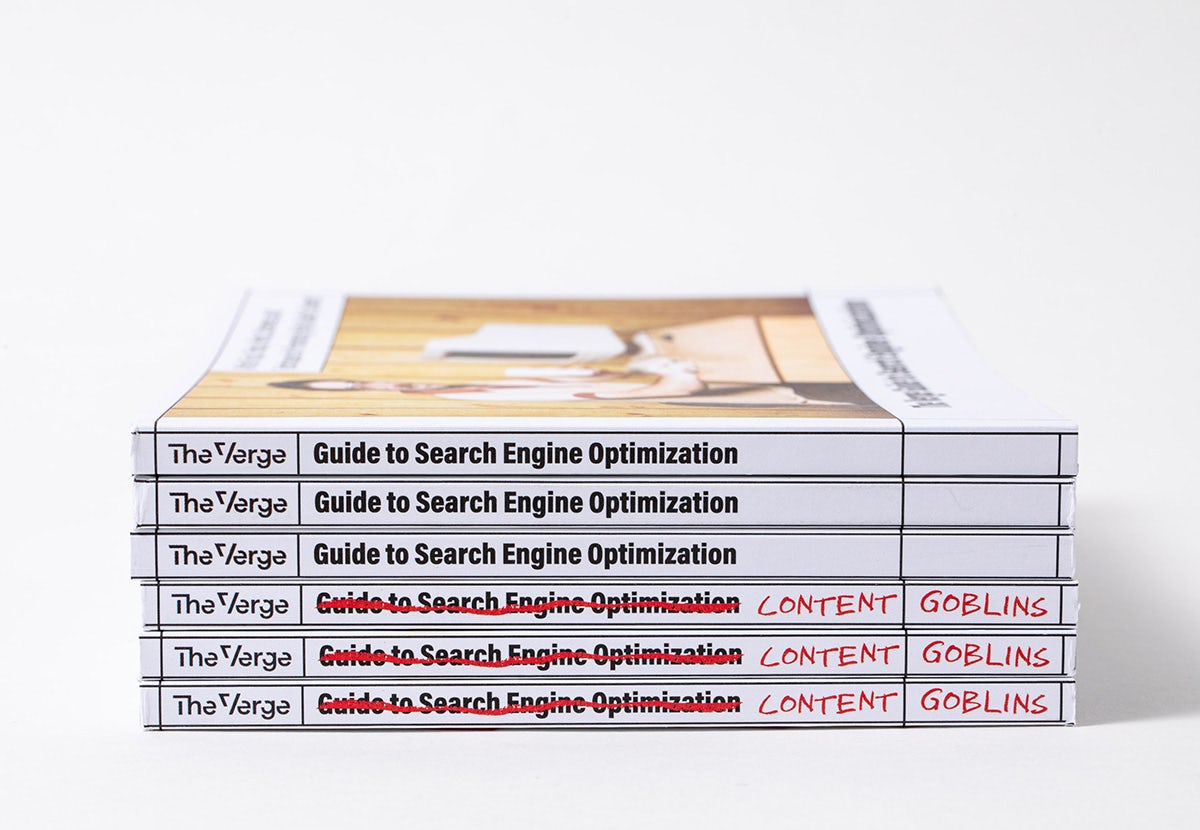The Verge’s new mag parodies dated guidebooks
The tech platform is exploring nonsense SEO-driven content in a limited edition print publication disguised as an old-fashioned guide
If you’re looking for some tips on SEO, you might be interested in The Verge’s new book. But tread carefully, because all is not as it seems.
Created exclusively for subscribers, the tech platform’s new limited edition publication looks like an SEO guide at first glance. But slip off the dust jacket and you get the real thing: a print magazine called Content Goblins, referring to the people who create “internet slop simply for the clicks”, The Verge creative director Kristen Radtke tells us.

The publication builds on The Verge’s 2023 online investigation into the “cottage industry” of SEO experts who have caused the internet to become awash with drivel – or as they put it, “the people who ruined the internet”.
“We’ve done web-to-print transitions before, like in our Homeland series in 2022, a year-long project about the Department of Homeland Security,” Radtke explains. “But unlike the Homeland project, where the print and online projects had a cohesive aesthetic, I wanted Content Goblins to stand alone, with its own aesthetic.”

“We don’t create print projects very often at The Verge, so when we do, I like the items to feel really bespoke,” she adds.
She likens the content produced by these ‘goblins’ to stock imagery, so she decided to incorporate this thinking into the art direction by shooting “parodied stock photos of a 1980s style workplace”, while “the throwback nature of the wardrobe and sets mimics the out-of-date quality of the SEO industry as a whole”.


“The base layer of the project is formatted like a somewhat traditional how-to manual, and the second layer (which I call the ‘goblin’ layer) is a chaotic pasted-on vibe, with slime, stickers, red pen, coffee stains, and general mess-making. I wanted to create a version of the internet IRL, so I designed web browsers that looked like pamphlets and pop-up windows that function like stickers,” she says. “The Verge writes a lot about how the internet works, and how content is created and found, so I knew the audience would get the SEO jokes.”
There are other references that devoted readers will probably pick up on too, Radtke points out. “This project is sort of a love letter to The Verge: we didn’t hire any models for the project, and all the photos (by senior photographer Amelia Holowaty Krales) are of Verge staffers. It’s so fun getting my colleagues into the studio.”

Content Goblins is available for The Verge annual subscribers; theverge.com










